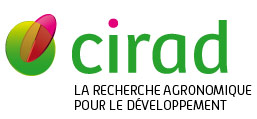Climate warming impact on the future distribution of the Coffee Antestia bug, Antestiopsis thunbergii, in the Kilimanjaro region, Tanzania
Ahmed A.G., Mwenda D., Babin R.. 2016. In : The 26th International Conference on Coffee Science (ASIC): Kunming 2016. Kunming : ASIC, p. 73-73. International Conference on Coffee Science. 26, 2016-11-13/2016-11-19, Kunming (Chine).
Rationale. The report of intergovernmental panel on climate change (IPCC, 2007), estimates an increment in average global temperature from 1.4 to 5.8ô¯C by the end of this century. This may increase coffee pests' prevalence, which will lead to serious damage to the coffee plantations. The Antestia bug Antestiopsis thunbergii is a major pest of Arabica coffee in East Africa, especially in the Kilimanjaro region, Tanzania. The yield loss due to this pest is estimated to be 45% (McNutt, 1979). In addition, this pest is involved in "potato test" defect on Arabica coffee of African Great Lakes region, reducing its quality and competitiveness in foreign markets. Methods. The biology of A. thunbergii was studied in the laboratory at seven constant temperatures from 18ô¯C to 32ô¯C with RH between 70 and 85%. The life table data collected was used to develop temperature based phenology models using nonlinear functions. Then, the phenology models were validated and used with combination of temperature data from Kilimanjaro coffee farms, in order to map the impact of global warming on the distribution of this pest. The risk mapping was based on the current temperature data (2014), while future temperature data for the region (2055) was extracted from AFRICLIM database (Platts et al., 2015). Results. The phenology models we obtained showed a significant effect of temperature on the development, survival and population growth of A. thunbergii (p < 0.05). The simulated egg incubation period ranged from 11 d at 18ô¯C to 3 d at 32ô¯C. The complete life cycle from egg to adult was simulated at 127.7 d at 18ô¯C and 51.6 d at 30ô¯C. The highest mortality for immature stages was observed for the second instar with 93.9% at 18ô¯C. The bug was not able to develop to adult stage at 32ô¯C. The risk maps obtained from phenology models showed that the pest may shift to higher elevations of Kilimanjaro slopes, with an increase in the number of generations per year, leading to more damage in high quali
Documents associûˋs
Communication de congrû´s
Agents Cirad, auteurs de cette publication :
- Babin Rûˋgis — Bios / UMR PHIM
